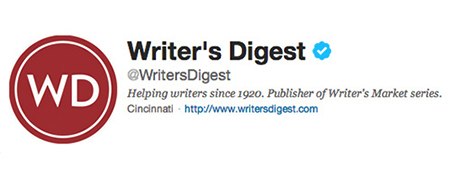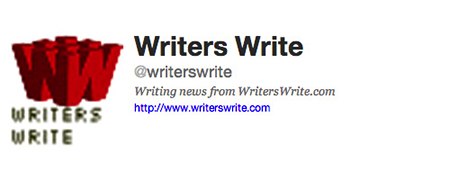This month, thousands of people will write 50,000 words, but these will not be fully formed books, for this is an outpouring of first draft creative material and that is a hugely important distinction.
First draft material is allowed to be crap, and often is and it’s meant to be so.
So don’t worry! A perfect sentence does not appear fully formed on the page, and it is not followed by another one, and another, to create a perfect story in one go. That’s not how writing works – but it is the myth of writing which we must dispel.
“Writing is rewriting,” as the great Michael Crichton said. Remember that, and then go write 50,000 words of first draft material that you can shape into something marvelous later.
So how do you get your first draft material from your head onto the page? Here are some of my tips.
(1) Set a word count goal
This is why NaNoWriMo works so well for people, as you have to write around 1700 words per day in order to ‘win’. Many pro-authors, like Stephen King, have a goal of 2000 per day, even birthdays and Christmas.
If you don’t have some kind of goal, you won’t achieve anything. I really believe that. It also breaks the work down into manageable chunks.
For a full length novel, say 80,000 words @2000 words per day = 40 days of consistent writing
For a novella, say 30,000 words @2000 words per day = 15 days of consistent writing
Of course, you have the editing process after that, but you can’t edit a blank page. So set your word count goal, and get writing.
[Personally, I always use word count goals in the first draft writing phase, but I don’t do that many fiction words every day of the year.]
(2) Write Or Die
 This awesome software at WriteOrDie.com is a way to burst through the internal editor that snipes at you as you write a load of crap in your first draft phase.
This awesome software at WriteOrDie.com is a way to burst through the internal editor that snipes at you as you write a load of crap in your first draft phase.
The software allows you to set a goal in time or word count. I started with 20 minutes, and then you have to keep typing or it will play some psycho violin music, or the screen will start turning red, or in kamikaze mode, your words start disappearing. At the end of the session when you reach your goal, trumpets sound and you can save the text.
I highly recommend this if you are struggling. This is how I wrote 20,000 words in my first NaNoWriMo and created the core of Pentecost. Maybe 2000 words survived the culling/editing but you have to write a lot of crap to shape it into something good (at least when you’re starting out anyway!)
(3) Scrivener

Scrivener Project Targets
I wax lyrical about Scrivener all the time, but it has some cool productivity tools. You can set Project Targets, so 50,000 words for example, and you can also set Session Targets, so mine is set at 2000 words. Every time you sit down to write, you can have those targets floating by your work and the progress bar moves so you can see how its going. Very motivating.
I also like to put as many scenes in as possible before I start writing, so I have somewhere to start each day. So right now, I have 11 one-line scene descriptions that I can fill in as I go along. I will change them, add to them etc but it means that whenever I sit down for a writing session, I can start filling in the blanks if I don’t know what else to do.
There’s also a Compose mode so you can fill the whole screen with a blank piece of paper. Keeps you focused
(4) Set a timer for focus sessions, and use Freedom or other software to turn the internet off
As part of my daily productivity tools, I set my (iphone) timer for 90 minutes and then I write, or edit, or work on a specific project for that long. But you can start with 10 mins or 15 or whatever you can manage.
The important thing is not to get distracted in that time, and DO NOT check the internet or twitter or your email or make a cup of tea or anything. You can use software like Freedom to stop you accessing the ‘net if you really can’t resist without help.
(5) Get up really early and work while your brain is still half asleep
 When I wrote my first novel, Pentecost, while working full time, I used to get up at 5am and write for an hour before work.
When I wrote my first novel, Pentecost, while working full time, I used to get up at 5am and write for an hour before work.
Johnny B. Truant recently did this to write 2 novellas in 2 months (although he started at 4am some days – ouch.)
I think the early morning helps because your brain isn’t polluted by everything that has happened in the day, and your internal editor is still asleep. However, this totally depends on whether you’re a night-owl and your family situation etc etc … so find your own groove, but the point is, you need to schedule some time that you don’t have normally to get stuff done.
[Here’s another productivity tip. I got rid of the TV nearly 5 years ago, about the time that I started writing, blogging and changing my life – there’s some correlation there!]
Trust the process of emergence
I heard this in an interview with Brene Brown on Jonathan Fields’ Goodlife Project, and it is totally true.
Even if you plot your books, sometimes you won’t know what is coming until the words appear on the page. Something happens when you commit to the page, to the word count goal and you write through the frustration and the annoyance and the self-criticism.
Creativity emerges. Ideas emerge. Original thought emerges.
Something happens – but only if you trust emergence.
You can see the process work itself through by checking out the journey of my first novel. It starts in NaNoWriMo 2009 with my first draft material and ends with 40,000 books sold nearly 2 years later. The core idea completely changed  but I hope it will encourage you to see that first drafts are just the beginning.
but I hope it will encourage you to see that first drafts are just the beginning.
If you don’t force yourself to get the first draft material down, you will never have anything to work with. So fight resistance and get it done.
How do you get your first draft material written? Please leave a comment below.
Image top: Bigstock Shakespeare, Flickr CC Sunrise by Pilottage
This is a reprint from Joanna Penn‘s The Creative Penn.






